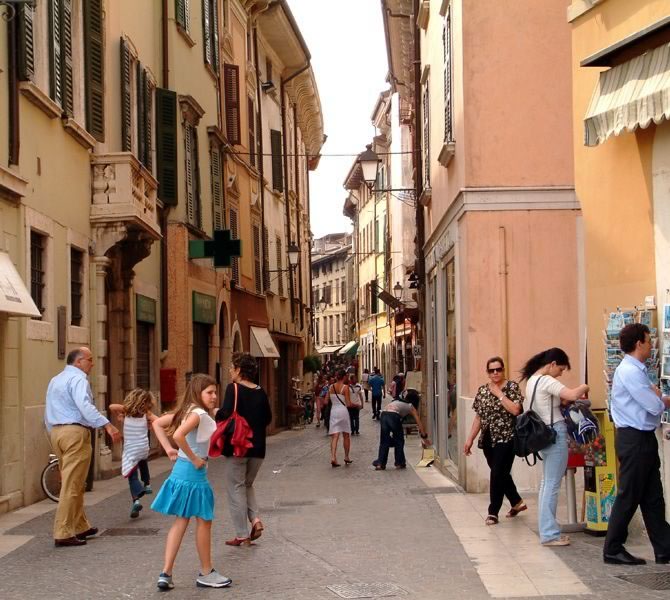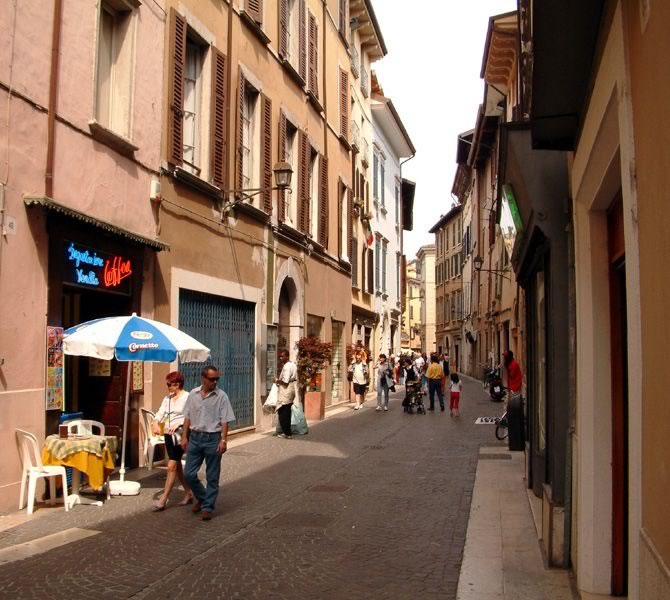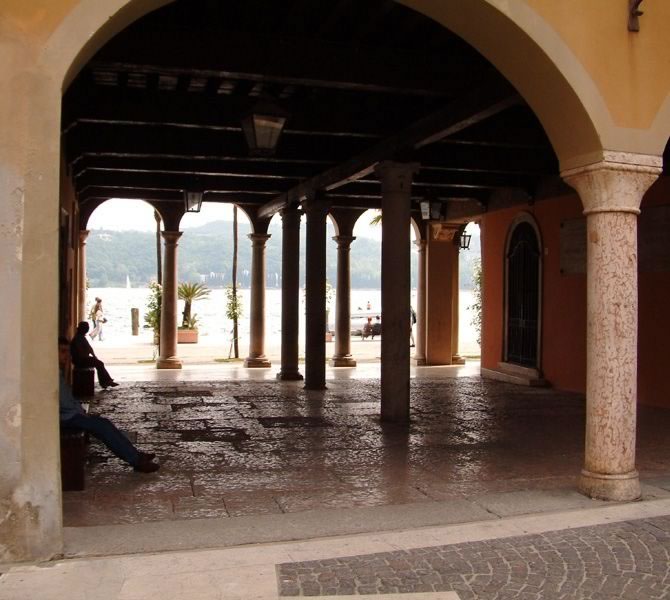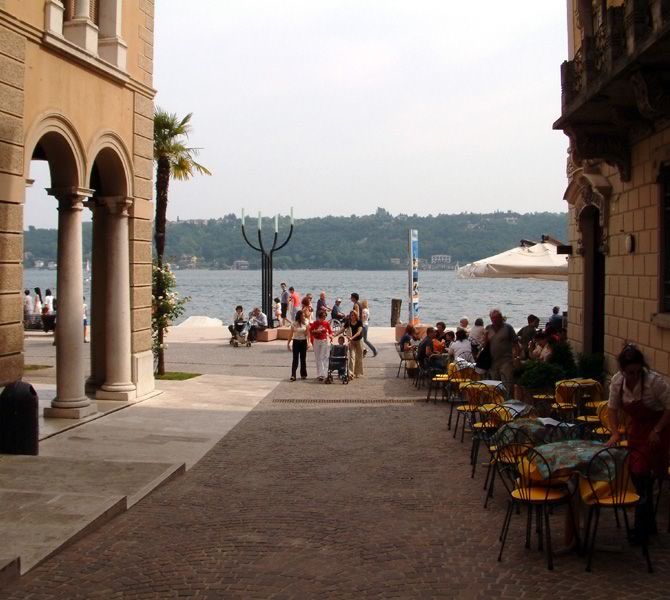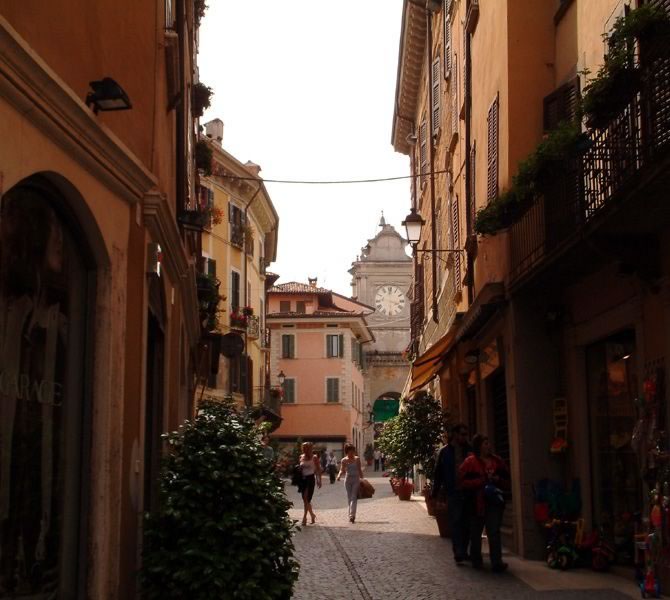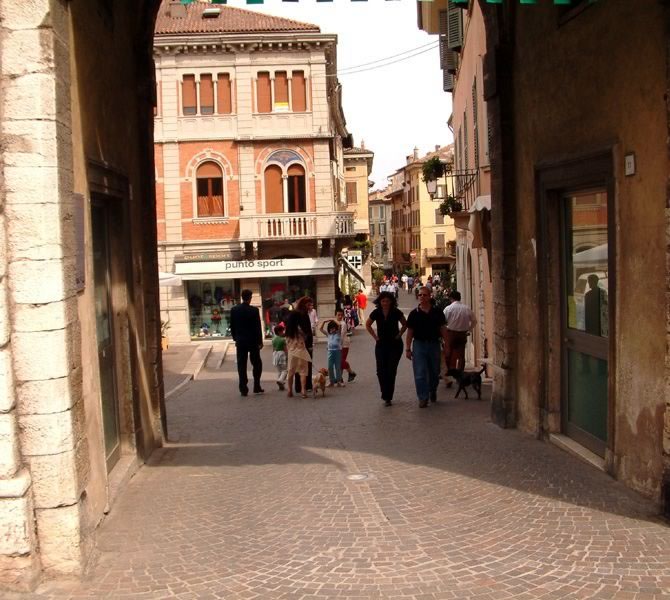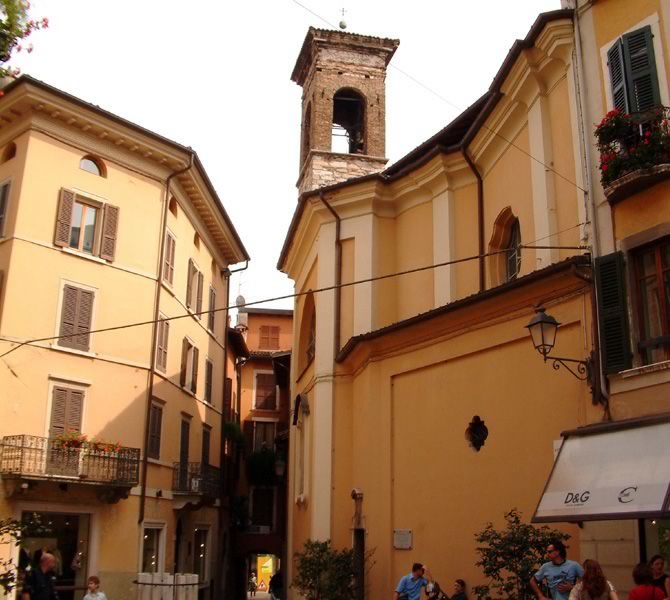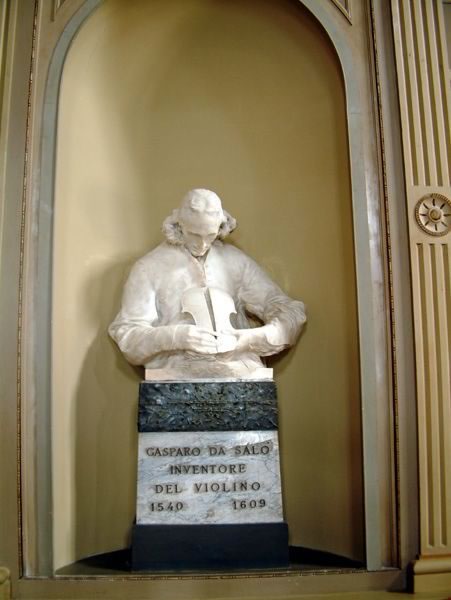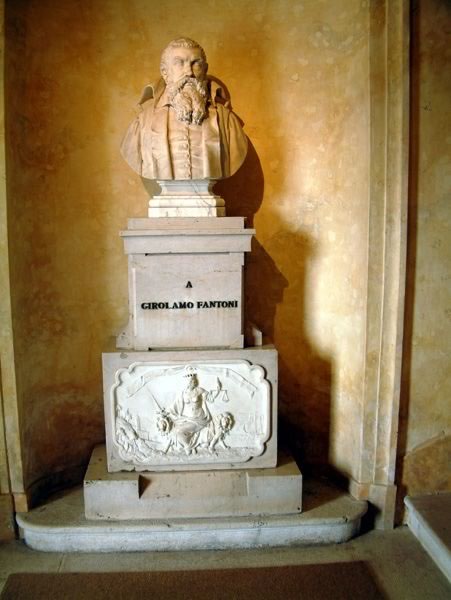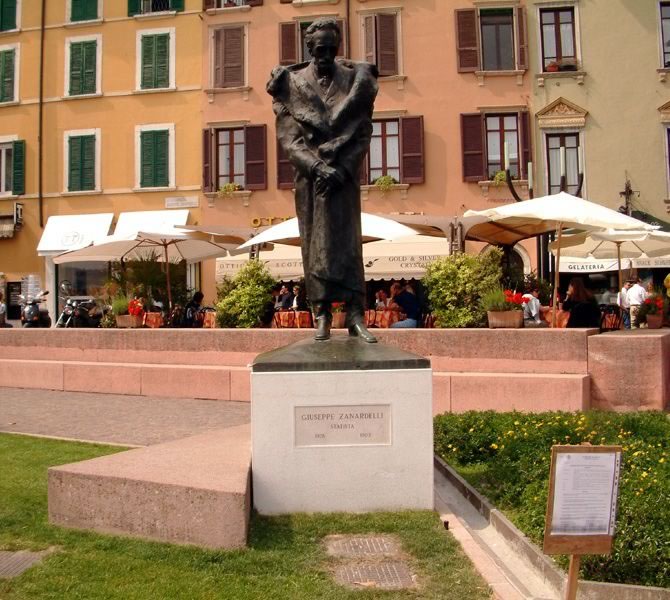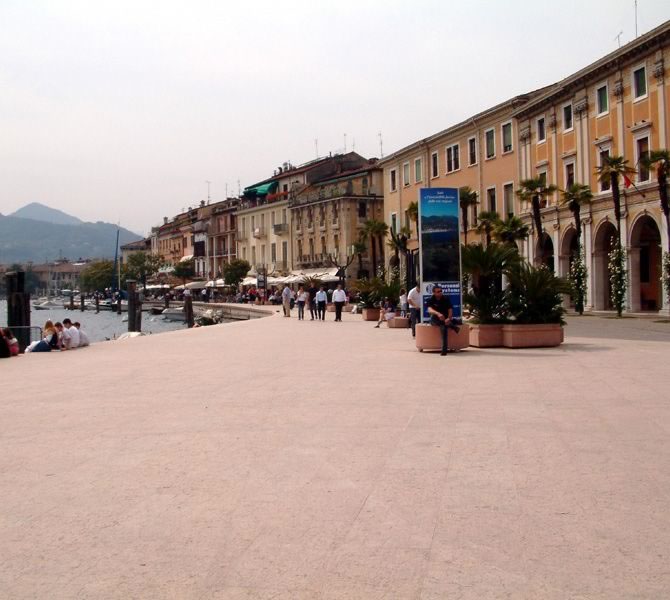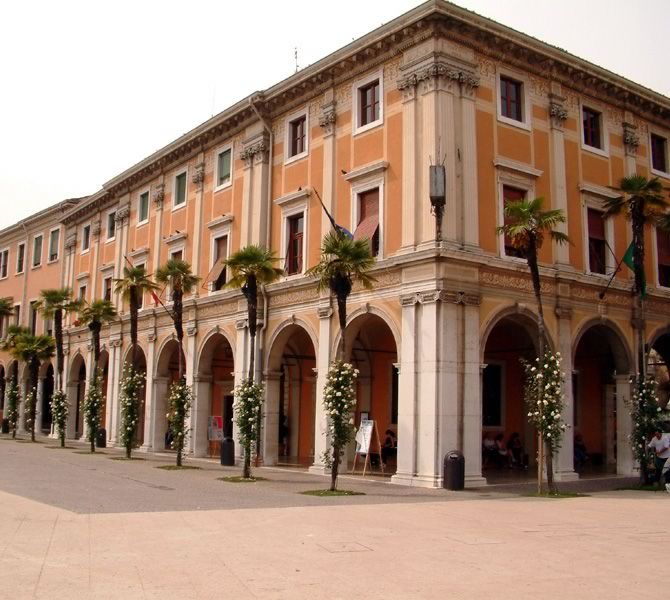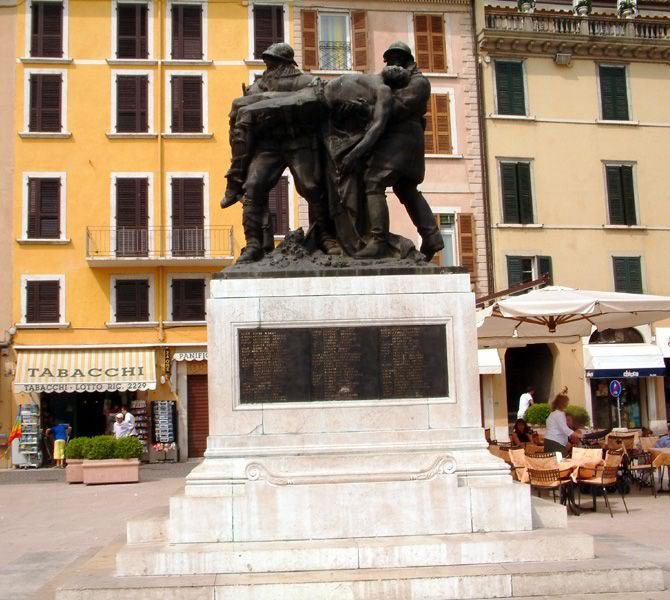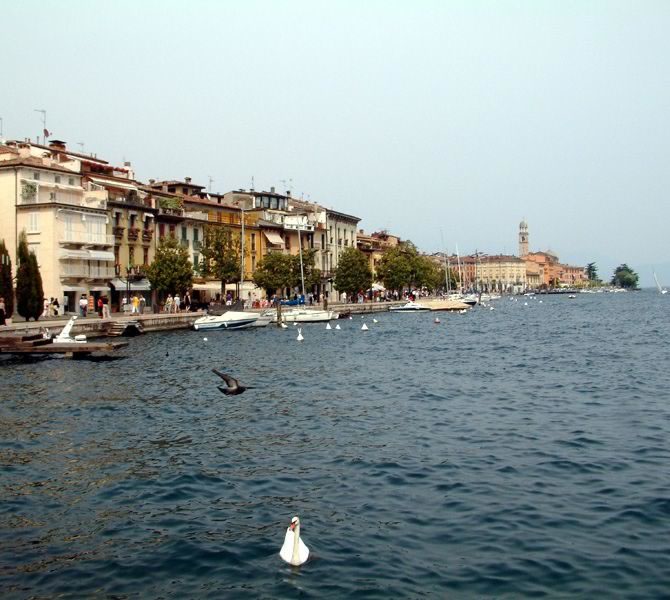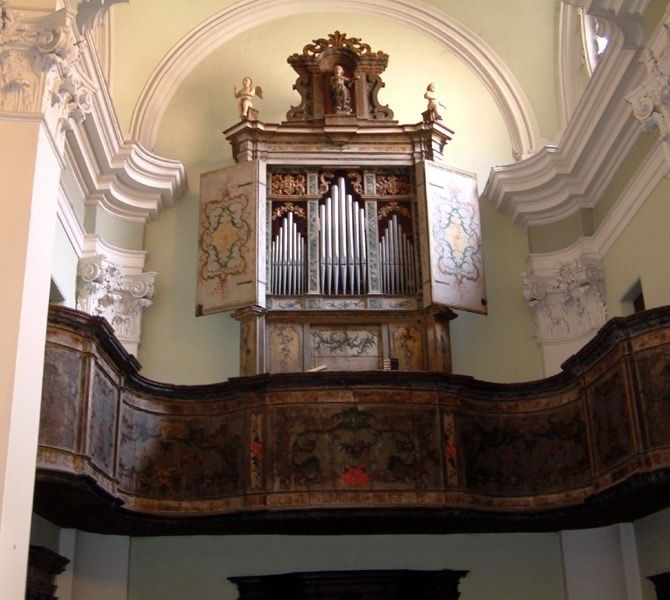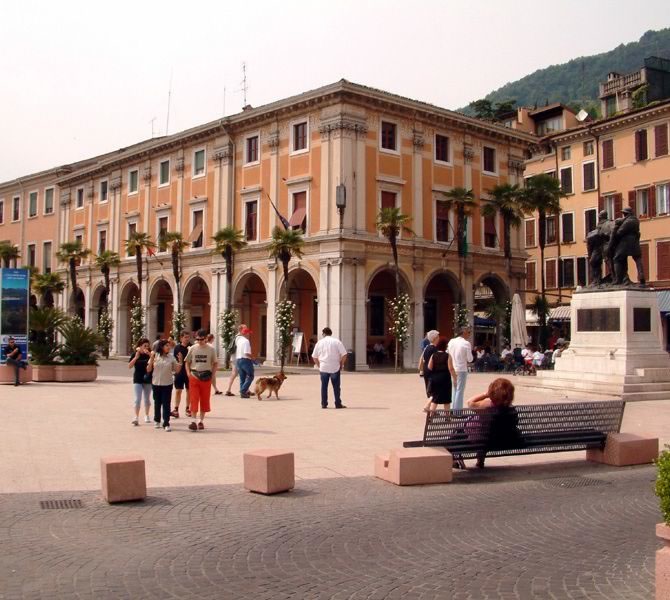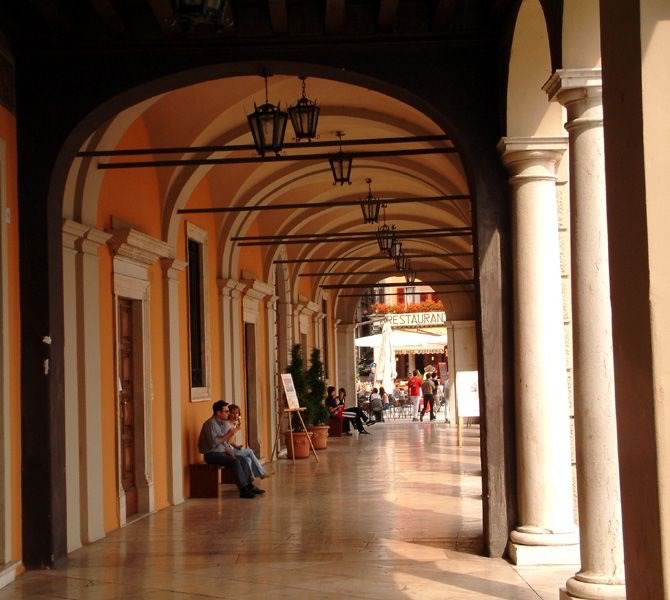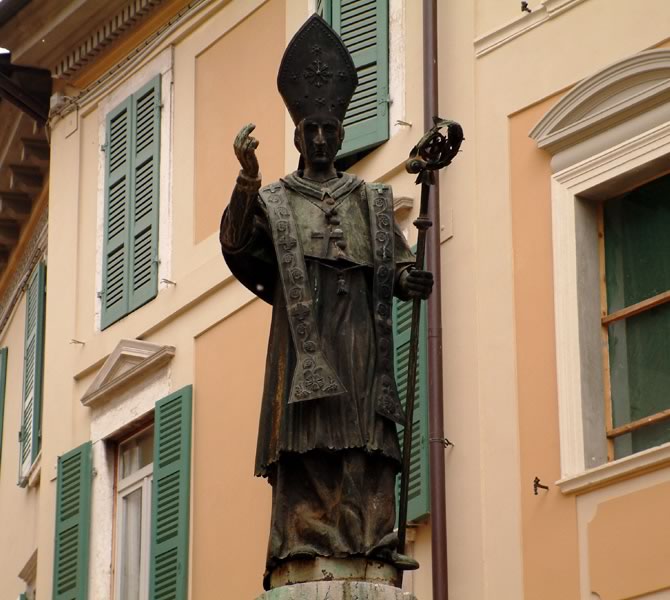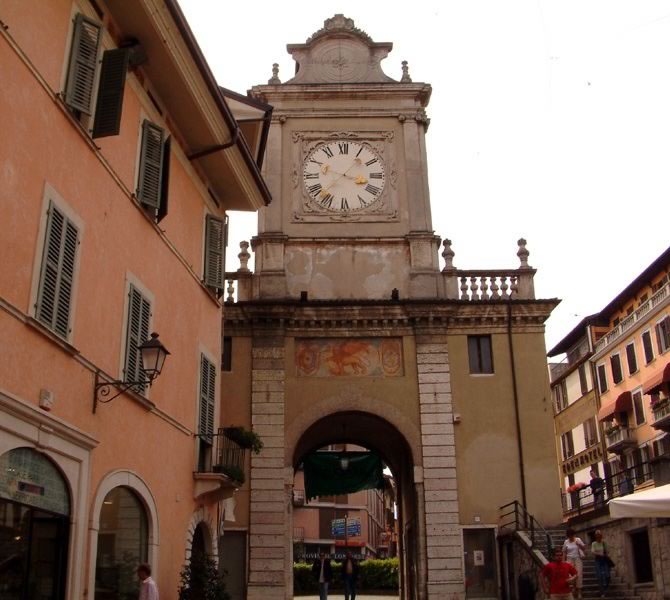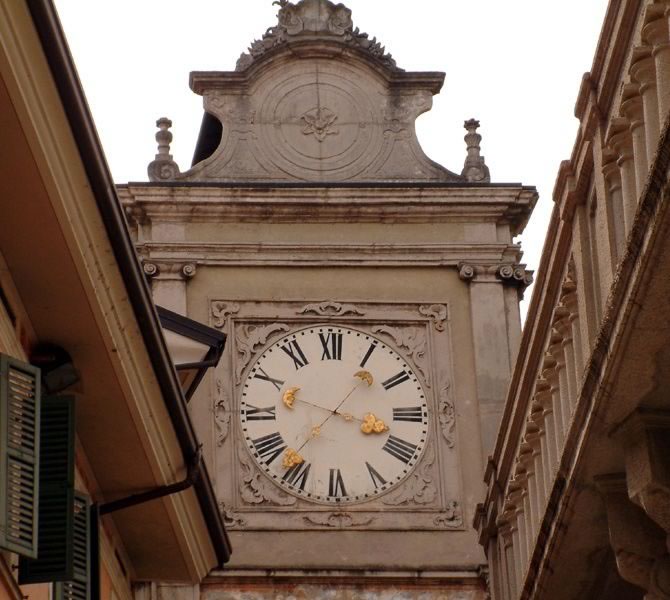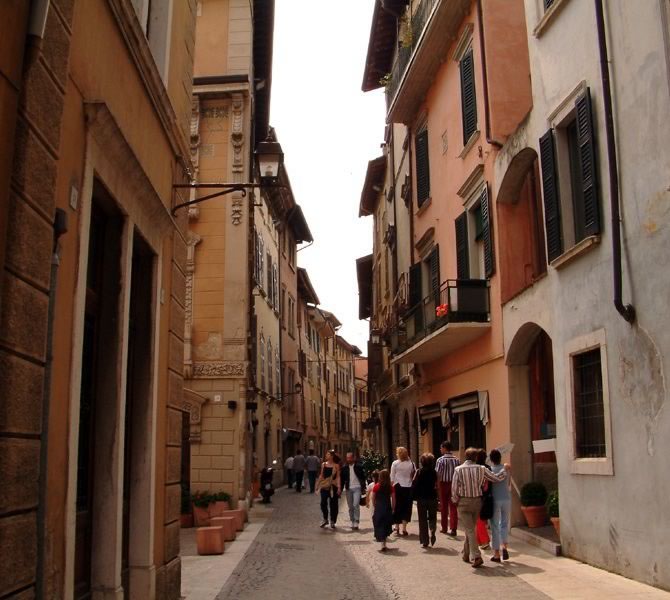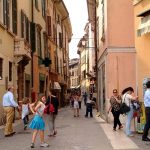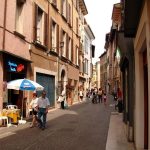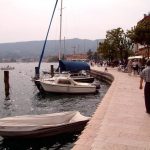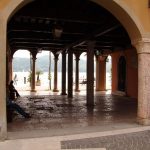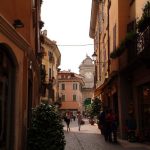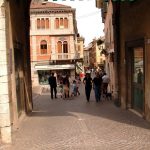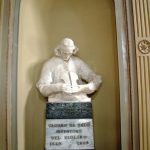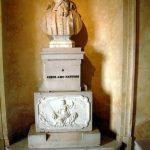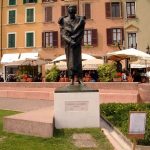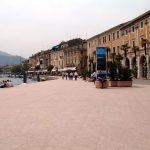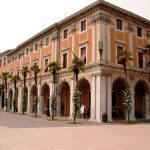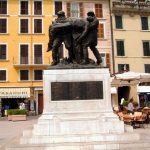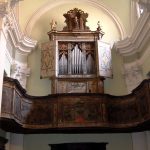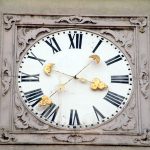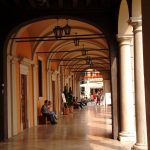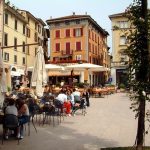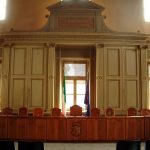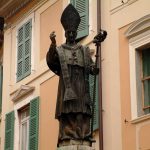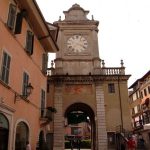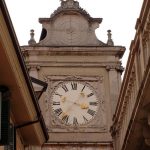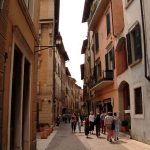Salò
HISTORY OF SALÒ
The original name of the town, “Salodium” derives from the Roman period, and in 1373 it became very important, thanks to Beatrice della Scala, wife of Bernabò della Scala, who chose the town as the capital of the “Magnifica Patria”, a unity of political domination for that country with its own laws and rights, being especially important, when Salò became part of the republic of Venice in 1426. More than 42 communes got together: Gargnano, Maderno, Salò, Montagna (La Val Sabbia), Valtenesi e Campagna (Desenzano and Sirmione) and more. In Salò there were the administration headquarters of the Serenissima (republic of Venice) commanded by the “Proveditore”, the chief captain, who had jurisdiction over the confederate towns. Later, in 1797, during the “Patto di Campoformio”, (pact of peace) the capital of the “Magnifica Patria” was abolished and the supremacy of Venice svanished.
ARTS
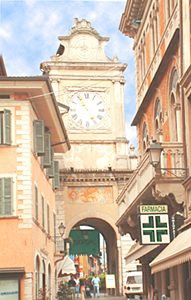 At the beginning of Salò centre, coming from “Gardone”, you can find the marvellous “Palazzo Terzi Martingendo”, ruins of an ancient castle, built in 1577 by “Marchese Sforza Pallavicino” with a wonderful large park next to the lake. In 1796 this place was scenery of an important battle between Frenchmen and Austrians ュ The Battle of Lonato. Not far from that palace there is a church with a wonderful entrance portal of the 14th. century. On “Via Landi” we reach “Hotel Laurin”, its original name was “Villa Simonini” constructed in steel beton, at the beginnings of the 19th. century, in liberty style. Inside it keeps masterpieces by Cesare Bertoletti and Angelo Landi (1912) and wonderful wrote iron lanterns. Passing through the entrance portal “Porta del Carmine” of the 14th. century, we take Via Fantoni. Here stands an enormous palace “Villa Fantoni” with a grandiose facade of the 15th. century. Today here are the public library and the military museum “Nastro Azzurro”, where you can admire documents, arms and uniforms from the period 1045 – 1796. That building, also, is seat of “Ateneo”, un ex-academy founded in 1564, preserving more than 25.000 books, mini codes, handwriting-documents of the 13th. century, books, printed during the 15th. century and a rich documentation of the unity “Magnifica Patria”. The majestic Cathedral of Salò is surrounded by wonderful antique buildings. Consecrated to Maria Assunta, (Our Lady) it was built in 1453 in Gothic Renaissance style by the projects of the architect Filippo delle Vacche. The inner side is rich of precious masterpieces, the grand flowery frame by Bartolomeo da Isola Dovarese, the wonderful wood statues by the Milan artist Francesco Bussolo. Precious the crucifix by Giovanni Teutonico (1449), named the most beautiful crucifix of Italy. In this temple we can find pieces by Andrea Celesti “The Adoration of the Wise Men” (1689) and two paintings by Romanino.
At the beginning of Salò centre, coming from “Gardone”, you can find the marvellous “Palazzo Terzi Martingendo”, ruins of an ancient castle, built in 1577 by “Marchese Sforza Pallavicino” with a wonderful large park next to the lake. In 1796 this place was scenery of an important battle between Frenchmen and Austrians ュ The Battle of Lonato. Not far from that palace there is a church with a wonderful entrance portal of the 14th. century. On “Via Landi” we reach “Hotel Laurin”, its original name was “Villa Simonini” constructed in steel beton, at the beginnings of the 19th. century, in liberty style. Inside it keeps masterpieces by Cesare Bertoletti and Angelo Landi (1912) and wonderful wrote iron lanterns. Passing through the entrance portal “Porta del Carmine” of the 14th. century, we take Via Fantoni. Here stands an enormous palace “Villa Fantoni” with a grandiose facade of the 15th. century. Today here are the public library and the military museum “Nastro Azzurro”, where you can admire documents, arms and uniforms from the period 1045 – 1796. That building, also, is seat of “Ateneo”, un ex-academy founded in 1564, preserving more than 25.000 books, mini codes, handwriting-documents of the 13th. century, books, printed during the 15th. century and a rich documentation of the unity “Magnifica Patria”. The majestic Cathedral of Salò is surrounded by wonderful antique buildings. Consecrated to Maria Assunta, (Our Lady) it was built in 1453 in Gothic Renaissance style by the projects of the architect Filippo delle Vacche. The inner side is rich of precious masterpieces, the grand flowery frame by Bartolomeo da Isola Dovarese, the wonderful wood statues by the Milan artist Francesco Bussolo. Precious the crucifix by Giovanni Teutonico (1449), named the most beautiful crucifix of Italy. In this temple we can find pieces by Andrea Celesti “The Adoration of the Wise Men” (1689) and two paintings by Romanino.
“Palma, il Giovane” made wonderful frescoes, he painted the 4 evangelists. Other pieces of him are to find in baptistery, in the chorus and at the 4 corners of the pipe organ: “L’annunciazione”, la “Visitazione”, and “l’Assunzione della vergine”. The organ was constructed in 1546-48 by Giangiacomo Antenanti. Also prominent are the pieces by Zenon Veronese (16th. century), and Paolo Veneziano (1300 – 1362), the first artist of the famous paintings in “Venetian-style”. At least there are to see some pieces by Moretto di Brescia. Quite inside I the dome keeps the prominent statue “Gobbo del duomo”, a man with a hunchback, holding a box for alms in his hand (made in 1506). The legend tells about a young man, who, helping to construct the dome, was hurt by a falling down scaffolding and so he got that horrible hunchback. He lost his work and all he could do, was asking for alms. Wonderful the bell tower, the most ancient part of the cathedral.
The lake promenade of Salò is situated directly near the dome, where once a time there were placed wonderful villas with large gardens. A terrible earthquake destroyed them all in 1901. The promenade was constructed in 1906 and dedicated to “Giuseppe Zanardelli” and completely reconstructed in 1989 by the famous architect Vittoriano Viganò. Nearby the square “La Piazza” there is to see the palace “Palazzo della Magnifica Patria”, with its ancient loggia of the 15th. century, completely restored in 1905 and joined to the “Palazzo del Comune” (16th. century), today town hall. Inside you can admire a precious sculpture by Angelo Zannelli, representing Gasparo da Salò, the inventor of the violin. Precious the magnificent ceiling “Il trionfo della Croce” by Andrea Bertanza. Under the portico, which unites the two buildings, you can find beautiful frescoes and tombs, and at the facade there is to admire an ancient clock. And we go on sight-seeing! Two enormous buildings rise near “Piazza Vittorio Emanuele II”: the Clock-Tower of the 17th. century and the church “Chiesa della visitazione” of the beginnings of the 18th. century, its facade richly decorated with statues by Paolo Caliari.
ATTRACTIONS
There are to announce some important attractions of Salò the famous market on every Saturday and the production of syrop, liqueur and refreshing drinks made by the fruit “Cedro”. The traditional liqueur is called “L’Acqua di tutto cedro”, the recipe dates back to the period, when they cultivated citrus fruit on Lake Garda. Another famous liqueur from that epoch is named “l’Elixir Igienico”, it should be very good against nervous disturbs. During the period of “Magnifica Patria” there was the famous production of white thread, extracted by linen. Only a few merchants of Salò were allowed to acquire pure linen from “Pianura Padana”, distributing that material to farmer families, which span thread, bleaching it and dipping it several times in cinders and cleaning it finally in the dark-blue waters of Lake Garda. Then the material returned to the merchants, who sold the thread in the several towns. Till the 19th. century in Salò there were more than 90 “thread spanners” and 18 manufacturers. Great part of thread was sold at Venice, too, while in Burano they produced ship ropes and the finest laces. But Salò is famous all over the world for the important fact, that the town from 1943 – 1945 were administration headquarters of RSI, the Republic of Socialism, the last phase of the Fascism. All important publications were printed exclusively here in that town. When the Republic of Salò was founded, Mussolini moved in Via Feltrini in Gargnano, where the steep rocks of Monte Denervo (1559m.) protected his residence against air attacks.
Therefore all the ministries were placed between the towns Gargnano and Desenzano. Maresciallo Rodolfo Graziani lived in Villa La Tassinara, a wonderful building of the 16th. century, situated at Rivoltella. The Ministry of War, commanded by Graziani lodged in Villa Omodeo at Soiano. The Ministry of Foreign Policy was transferred at Salò, in Villa Simonini (today Hotel Laurin), the headquarters of the police, however, were accommodated in Villa Castagna, and the ministry for popular culture in Villa Amadei, on Lungolago Zanardelli. Vittorio Mussolini, son of the DUCE lived in Villa Alba, nearby the Gothic tower “Ruhland”, the secret meeting-point of Mussolini and his lover Claretta Petacci. The lady lived in Villa Fiordaliso, in Fasano. In “Palazzo Bettoni”, there were stationed the commando headquarters of all ministries.

